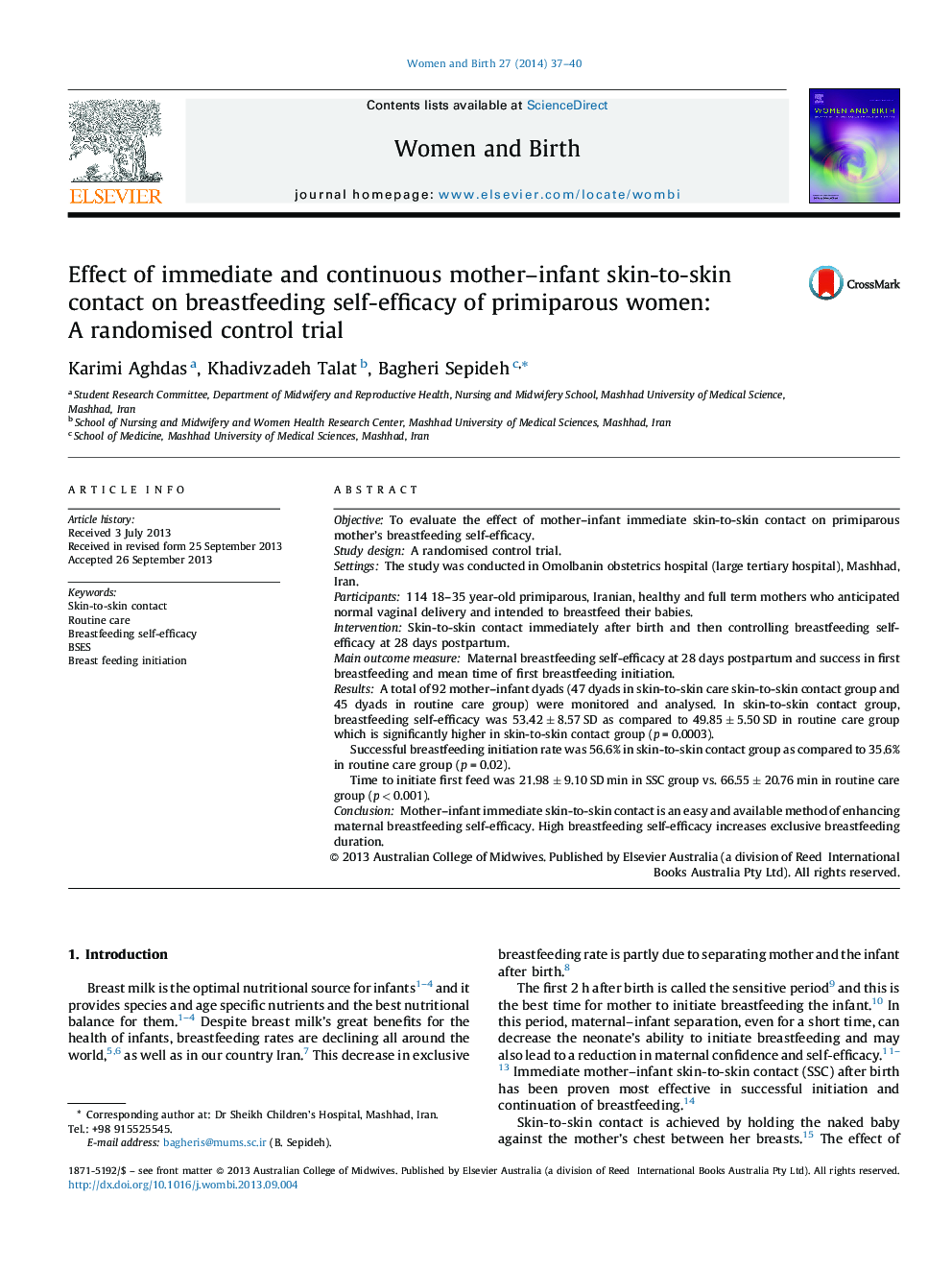| Article ID | Journal | Published Year | Pages | File Type |
|---|---|---|---|---|
| 2636057 | Women and Birth | 2014 | 4 Pages |
ObjectiveTo evaluate the effect of mother–infant immediate skin-to-skin contact on primiparous mother's breastfeeding self-efficacy.Study designA randomised control trial.SettingsThe study was conducted in Omolbanin obstetrics hospital (large tertiary hospital), Mashhad, Iran.Participants114 18–35 year-old primiparous, Iranian, healthy and full term mothers who anticipated normal vaginal delivery and intended to breastfeed their babies.InterventionSkin-to-skin contact immediately after birth and then controlling breastfeeding self-efficacy at 28 days postpartum.Main outcome measureMaternal breastfeeding self-efficacy at 28 days postpartum and success in first breastfeeding and mean time of first breastfeeding initiation.ResultsA total of 92 mother–infant dyads (47 dyads in skin-to-skin care skin-to-skin contact group and 45 dyads in routine care group) were monitored and analysed. In skin-to-skin contact group, breastfeeding self-efficacy was 53.42 ± 8.57 SD as compared to 49.85 ± 5.50 SD in routine care group which is significantly higher in skin-to-skin contact group (p = 0.0003).Successful breastfeeding initiation rate was 56.6% in skin-to-skin contact group as compared to 35.6% in routine care group (p = 0.02).Time to initiate first feed was 21.98 ± 9.10 SD min in SSC group vs. 66.55 ± 20.76 min in routine care group (p < 0.001).ConclusionMother–infant immediate skin-to-skin contact is an easy and available method of enhancing maternal breastfeeding self-efficacy. High breastfeeding self-efficacy increases exclusive breastfeeding duration.
